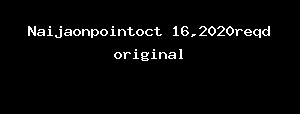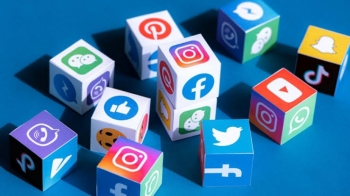News And PoliticsCommunications And EntertainmentSports And FitnessHealth And LifestyleOthersGeneralWorldnewsBusiness And MoneyNigerianewsRelationship And MarriageStories And PoemsArts And EducationScience And TechnologyCelebrityEntertainmentMotivationalsReligion And PrinciplesNewsFood And KitchenHealthPersonal Care And BeautyBusinessFamily And HolidaysStoriesIT And Computer ScienceSportsRelationshipsLawLifestyleComedyReligionLifetipsEducationMotivationAgriculturePoliticsAnnouncementUSMLE And MedicalsMoneyEngineeringPoemsSocial SciencesHistoryFoodGive AidBeautyMarriageQuestions And AnswersHobbies And HandiworksVehicles And MobilityTechnologyFamilyPrinciplesNatureQuotesFashionAdvertisementChildrenKitchenGive HelpArtsWomenSpiritualityQuestions AnsweredAnimalsHerbal MedicineSciencePersonal CareFitnessTravelSecurityOpinionMedicineHome RemedyMenReviewsHobbiesGiveawayHolidaysUsmleVehiclesHandiworksHalloweenQ&A
Social Sciences
profile/2896d1f9af418a2f4c11bee789efbde4a6c1.jpg
Lawrence66

Naijaonpointoct 16,2020reqd Original
~1.4 mins read
Years after the MMM founder defrauded many Nigerians. See what later happened to him
NaijaonpointOct 16, 2020Read original
Sergei Panteleevich Mavrodi, the founder of the MMM ponzi scheme which started in November 2015. It guaranteed returns of a whopping 30 percent per month on payments, and for a while it worked, so word spread quickly.
Ever since it began, it kept up to its promise of guaranteed returns of 30 percent per month on payments for some time.
Since it was working, it spread across Nigeria quickly and the number of Nigerians who signed up to the MMM ponzi scheme between February and July 2016, grew up from 100,000 to over Two million people.
However, the Central Bank of Nigeria and the Economic and Financial Crimes Commission, EFCC, launched investigations into the scheme, and warned Nigerians to stop investing their money. Many didn’t listen to the warnings but kept investing into the scheme, while more kept joining.
Unexpectedly, in December 2016, the MMM ponzi scheme folded up it operations when many people are thinking of how they will withdraw their funds and use it for Christmas holidays which was later impossible. News came later that the company was taking a short break and they might return back as quick as possible and be better than before.
But that was a nothing but a lie, because they never returned, and that left many people who put their money into the scheme in tears.
Ever since then, nobody heard anything about the founder of the MMM ponzi scheme, until March 25, when Sergei Panteleevich Mavrodi died of heart attack in a hospital in Moscow at the age of 63 years old.
Many people in Nigeria especially those who are defrauded, said that the heart attack that led to his death may have been caused as a result of what he did to many people, defrauding them and leaving them in sorrow.
profile/5309IMG_20181126_191303.jpg
Ematy1

THE CHRONICLES OF SOCIAL MEDIA
~3.6 mins read
Social media are interactive computer-mediated technologies that facilitate the creation or sharing of information, ideas, career interests, and other forms of expression via virtual communities and networks. The variety of stand-alone and built-in social media services currently available introduces challenges of definition; however, there are some common features:
Social media are interactive Web 2.0 Internet-based applications.
User-generated content such as text posts or comments, digital photos or videos, and data generated through all online interactions, is the lifeblood of social media.
Users create service-specific profiles for the website or app that are designed and maintained by the social media organization.
Social media facilitate the development of online social networks by connecting a user's profile with those of other individuals or groups.
Users usually access social media services via web-based apps on desktops and laptops, or download services that offer social media functionality to their mobile devices (e.g., smartphones and tablets). As users engage with these electronic services, they create highly interactive platforms through which individuals, communities, and organizations can share, co-create, discuss, participate and modify user-generated content or self-curated content posted online. Wikis are examples of collaborative content creation. Additionally, social media are used to document memories, learn about and explore things, advertise oneself and form friendships as well as the growth of ideas from the creation of blogs, podcasts, videos, and gaming sites. This changing relationship between human and technology is the focus of the emerging fields of technoself studies.
Social media outlets differ from traditional media (e.g., magazines, newspapers, TV broadcasting, and radio broadcasting) in many ways, including quality, reach, frequency, usability, immediacy, and permanence. Additionally, social media outlets operate in a dialogic transmission system (many sources to many receivers) while traditional media outlets operate under a mono-logic transmission model (one source to many receivers). For example, a newspaper is delivered to many subscribers and a radio station broadcasts the same programs to an entire city.
Some of the most popular social media websites, with over 100 million registered users, include Facebook (and its associated Facebook Messenger), TikTok, WeChat, Instagram, QZone, Weibo, Twitter, Tumblr, Baidu Tieba and LinkedIn. Other popular platforms that are sometimes referred to as social media services (differing on interpretation) include YouTube, QQ, Quora, Telegram, WhatsApp, LINE, Snapchat, Pinterest, Viber, Reddit, Discord, VK, Microsoft Teams, and more.
Observers have noted a wide range of positive and negative impacts of social media use. Social media can help to improve an individual's sense of connectedness with real or online communities and can be an effective communication (or marketing) tool for corporations, entrepreneurs, non-profit organizations, advocacy groups, political parties, and governments.
Social media may have roots in the 1840s introduction of the telegraph, which connected the United States. The PLATO system launched in 1960, after being developed at the University of Illinois and subsequently commercially marketed by Control Data Corporation. It offered early forms of social media features with 1973-era innovations such as Notes, PLATO's message-forum application; TERM-talk, its instant-messaging feature; Talkomatic, perhaps the first online chat room; News Report, a crowd-sourced online newspaper, and blog; and Access Lists, enabling the owner of a note file or other application to limit access to a certain set of users, for example, only friends, classmates, or co-workers.
ARPANET, which first came online in 1967, had by the late 1970s developed a rich cultural exchange of non-government/business ideas and communication, as evidenced by the network etiquette (or "netiquette") described in a 1982 handbook on computing at MIT's Artificial Intelligence Laboratory. ARPANET evolved into the Internet following the publication of the first Transmission Control Protocol (TCP) specification, RFC 675 (Specification of Internet Transmission Control Program), written by Vint Cerf, Yogen Dalal and Carl Sunshine in 1974. This became the foundation of Usenet, conceived by Tom Truscott and Jim Ellis in 1979 at the University of North Carolina at Chapel Hill and Duke University, and established in 1980.
A precursor of the electronic bulletin board system (BBS), known as Community Memory, had already appeared by 1973. True electronic bulletin board systems arrived with the Computer Bulletin Board System in Chicago, which first came online on February 16, 1978. Before long, most major cities had more than one BBS running on TRS-80, Apple II, Atari, IBM PC, Commodore 64, Sinclair, and similar personal computers. The IBM PC was introduced in 1981, and subsequent models of both Mac computers and PCs were used throughout the 1980s. Multiple modems, followed by specialized telecommunication hardware, allowed many users to be online simultaneously. Compuserve, Prodigy and AOL were three of the largest BBS companies and were the first to migrate to the Internet in the 1990s. Between the mid-1980s and the mid-1990s, BBSes numbered in the tens of thousands in North America alone. Message forums (a specific structure of social media) arose with the BBS phenomenon throughout the 1980s and early 1990s. When the World Wide Web (WWW, or "the web") was added to the Internet in the mid-1990s, message forums migrated to the web, becoming Internet forums, primarily due to cheaper per-person access as well as the ability to handle far more people simultaneously than telco modem banks.
profile/9699FB_IMG_16480233200670964.jpg
Abah1001

Our Society
~0.4 mins read
In the society we all need to be very vigilant especially in this situation that our dear country is in a state of inscurity and others social verses which affect the society at large,we have come to a point where everyone is a police in his or her own effort in either to help in curbing crime in our society especially in the community and the under development area like the village and others area which is less developed,we should allowed for police community in which everyone is to maintain peace and others in their immediate evrroment in either to curb the rate of crime engagement.
Advertisement
Loading...
 Lawrence66
Lawrence66
 Ematy1
Ematy1
 Abah1001
Abah1001